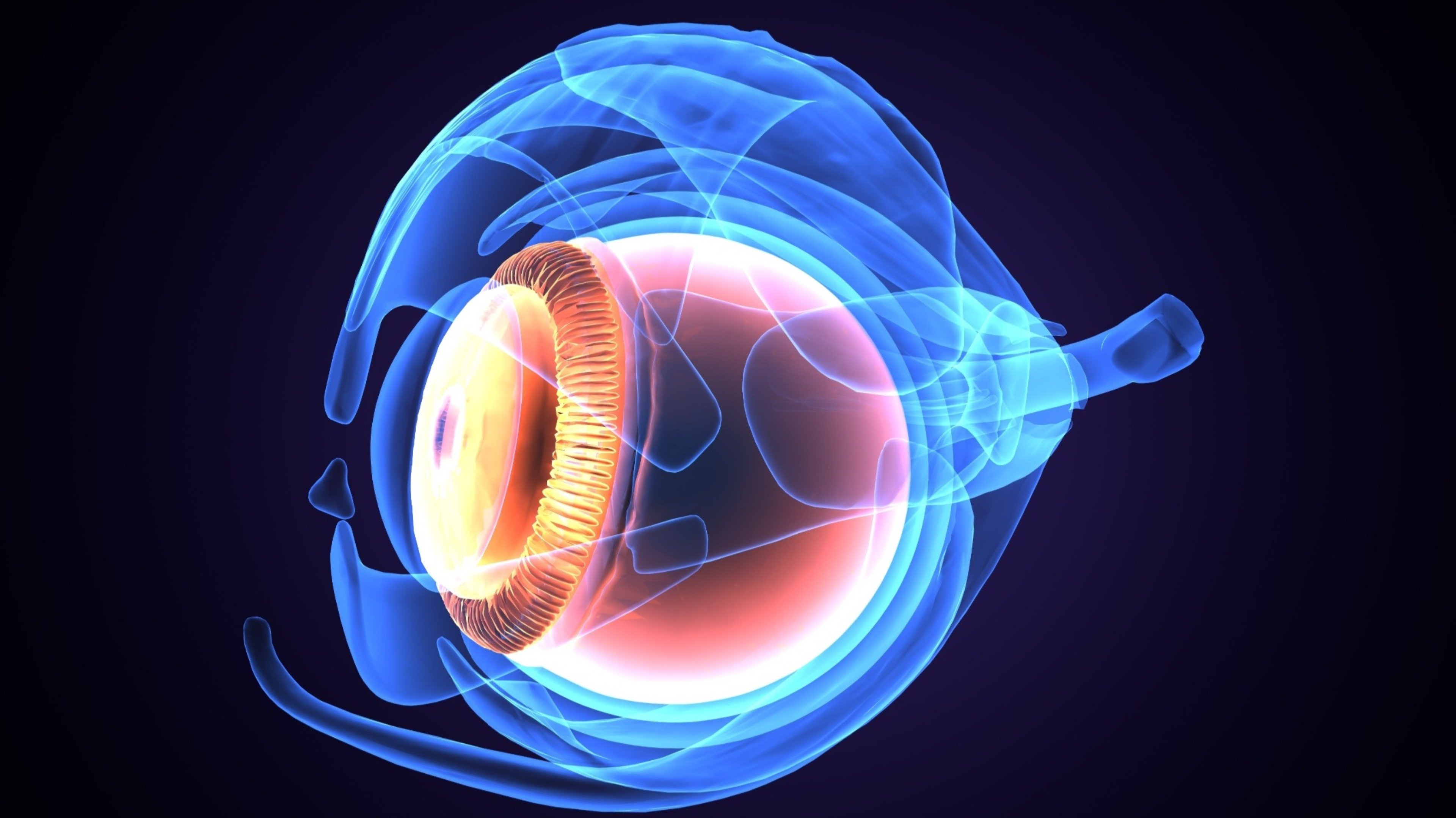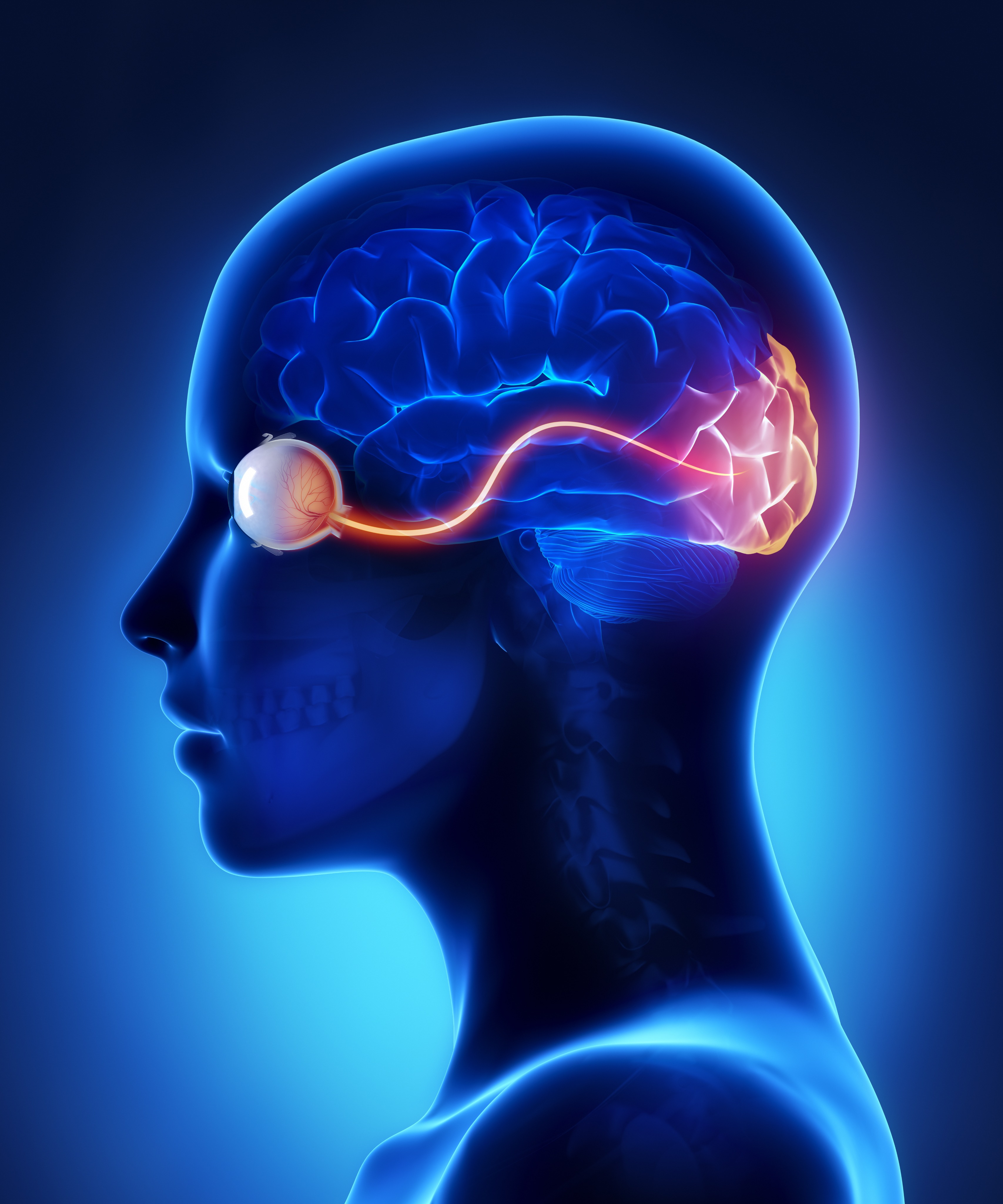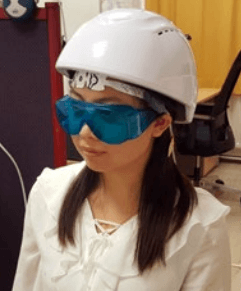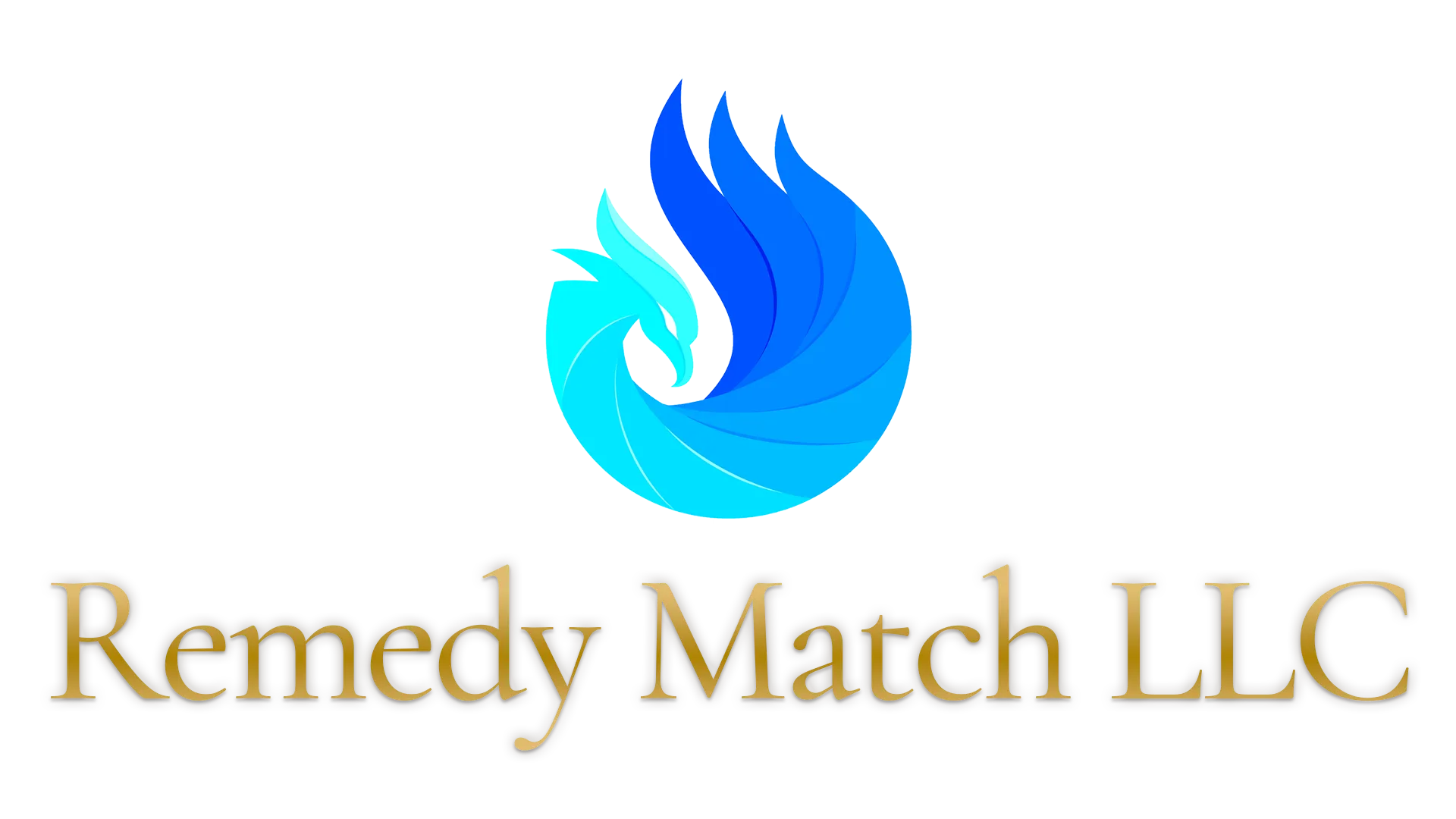All Matter is frozen Light.

Let there be light.
- Genesis 1:3
If you want to find the secrets of the universe, think in terms of energy, frequency and vibration.

The significant problems we have cannot be solved at the same level of thinking with which we created them.
- Albert Einstein
Future medicine will be the medicine of frequencies.
- Albert Einstein

The significant problems we have cannot be solved at the same level of thinking with which we created them.
- Albert Einstein
Photobiomodulation Research:
Eyes & Vision
Red Light Photobiomodulation Research:
Active range for mitochondrial activation via absorption by Cytochrome C Oxidase, which is the terminal enzyme of the mammalian respiratory chain:
Red: 630 to 660 nm
Near Infrared: 810 to 830 nm
Light:
Screens & Indoor Light:
Shrew Study with Flicker: Flickering blue light promotes refractive decreases such as myopia, and upon returning to colony lighting, refractions may return to emmetropia, suggesting that flicker light may be closely linked to signaling defocus.
Title: The wavelength composition and temporal modulation of ambient lighting strongly affect refractive development in young tree shrews.
Gawne TJ, Siegwart JT Jr, Ward AH, Norton TT Exp Eye Res. 2017 Feb; 155():75-84. [PubMed] [Ref list]
Sunlight:
Note: Over 50% of the photonic energy of sunlight is in the Infrared range, which structures living water to cleanse body tissues and provide direct metabolic energy bypassing ATP production, while selected frequencies in red and IR also activate mitochondrial metabolism and daytime mitochondrial production of melatonin which is highly protective.
Article: Does Sunlight provide Red Light Therapy? Health Benefits of the Sun Explained. gembared.com/blogs/musings/does-sunlight-provide-red-light-therapy-photobiomodulation-from-the-sun-explained
Outdoor Light:
Increased outdoor activities are effective to prevent myopia occurrence and to retard shift of refractive error from myopia, but not to decrease progression of already myopic eyes.
Review: Time spent in outdoor activities in relation to myopia prevention and control: a meta-analysis and systematic review.
Xiong S, Sankaridurg P, Naduvilath T, Zang J, Zou H, Zhu J, Lv M, He X, Xu X Acta Ophthalmol. 2017 Sep; 95(6):551-566. [PubMed] [Ref list]
Red Light:
Myopia:
Human Study:
Title: Effects of 650nm Low Energy Light on Human Retina and Choroid Microcirculation: Effect of 650nm Low Energy Light on Macular Microcirculation in Myopia Prevention and Control Human Study
Source: Central South University (China) (2020-2021) Email: [email protected]
Summary: 650 nm irradiation of retina effects on macular microcirculation; tracking axial length and myopia (under -6 Diopters)
Link: ichgcp.net/clinical-trials-registry/NCT04604405
Other Primates:
Monkey Study: Red light may alter refractive development by decreasing elongation of vitreous chamber and increasing choroidal thickness, suggesting that long-wavelength light with narrow band may retard axial elongation induced by hyperopic defocus and form deprivation, probably due to activating signals linked to myopic defocus.
Title: Narrow-band, long-wavelength lighting promotes hyperopia and retards vision-induced myopia in infant rhesus monkeys.
Hung LF, Arumugam B, She Z, Ostrin L, Smith EL 3rd Exp Eye Res. 2018 Nov; 176():147-160. [PubMed] [Ref list]
Monkey Study: Long wavelengths are not closely associated with promotion of myopia development in an infant monkey model Title: Effects of Long-Wavelength Lighting on Refractive Development in Infant Rhesus Monkeys. Smith EL 3rd, Hung LF, Arumugam B, Holden BA, Neitz M, Neitz J Invest Ophthalmol Vis Sci. 2015 Oct; 56(11):6490-500. [PubMed] [Ref list]
Other mammals:
Shrew Study: In postnatal refractive development, long-wavelength light may cause similar refractive error to that in myopia. Title: The hyperopic effect of narrow-band long-wavelength light in tree shrews increases non-linearly with duration.
Ward AH, Norton TT, Huisingh CE, Gawne TJ Vision Res. 2018 May; 146-147():9-17. [PubMed] [Ref list]
Avian:
Chick study: Red light can promote progressive myopia and blue light may cause progressive hyperopia in chick model, and such inductions can be reversed to hyperopia and myopia if the red and blue lights are switched, suggesting that manipulation of chromaticity may produce beneficial effects to myopia. [Note: low light levels may show opposite results due to hormesis effect; also the color of general daytime illumination has an accommodative effect not present during sleep.]
Title: Progressive myopia or hyperopia can be induced in chicks and reversed by manipulation of the chromaticity of ambient light.
Foulds WS, Barathi VA, Luu CD Invest Ophthalmol Vis Sci. 2013 Dec 9; 54(13):8004-12. [PubMed] [Ref list]
Cranial Nerves:
Facial Nerve:
Title: Photobiomodulation at a wavelength of 633 nm leads to faster functional recovery than 804 nm after facial nerve injury
Link: doi.org/10.1002/jbio.202100159
Connective Tissue: (relevant for sclera and axial length)
Summary: After 3 days under 628 nm light, mitochondrial respiratory and antioxidant genes are upregulated and apoptotic and stress-related genes are downregulated in human fibroblasts due to activation of cytochrome c oxidase.
Study: cDNA microarray analysis of gene expression profiles in human fibroblast cells irradiated with red light.
Zhang Y, Song S, Fong CC, Tsang CH, Yang Z, Yang M J Invest Dermatol. 2003 May; 120(5):849-57. [PubMed] [Ref list]
Near Infrared Light:
Title: “Quantum Leap” in Photobiomodulation Therapy Ushers in a New Generation of Light-Based Treatments for Cancer and Other Complex Diseases: Perspective and Mini-Review Abstract: Set within the context of the 2015 International Year of Light and Light-Based Technologies, and of a growing and aging world population with ever-rising healthcare needs, this perspective and mini-review focuses on photobiomodulation (PBM) therapy as an emerging, cost-effective, treatment option for cancer (i.e., solid tumors) and other complex diseases, particularly, of the eye (e.g., age-related macular degeneration, diabetic retinopathy, glaucoma, retinitis pigmentosa) and the central nervous system (e.g., Alzheimer’s and Parkinson’s disease).
Source: Photomed Laser Surg . 2016 Mar;34(3):93-101. doi: 10.1089/pho.2015.4015. Epub 2016 Feb 18. Link: ncbi.nlm.nih.gov/pmc/articles/PMC4782038/
Heading: POTENTIAL OPTIC THERAPEUTIC APPLICATIONS BY NIR LIGHT
"Light penetration from NIR light rely on target tissues, wavelengths, and sources of NIR light. NIR light is safe but effective. Within near-infrared wavelengths, light can penetrate eyes at maximal level, but absorption of light by cornea and lens is at minimal level (approximately 10%) 95. The neurons from retina require high energy, or mitochondrial ATP to satisfy tissue requirements 96-98. Like other neurons, retinal neurons are very sensitive to depletion of glucose or lack of energy, oxidative stress and malfunction of mitochondria 99, 100. Mitochondrial malfunction plays a critical role in retinal neurodegeneration 101. Optic neuron damages are characterized by high morbidity and mortality, without any effective treatments at present 102-105. Alzheimer's patients have fewer retinal ganglion cells, ganglion axons, than healthy people 104, 106, 107. Leber's optic neuropathy, a mitochondrial disease, can lead to ~2% of all blindness patients in this world 108. Therefore, cellular degeneration from retinal ganglion cells is a major health problem in this world. Other genetic disorders include Leigh syndrome 109, 110, Friedreich's ataxia 111, myoclonic epilepsy due to ragged-red-fibers 112, mitochondrial acidosis and strokes 113, spastic paraplegia 114, and optic atrophy syndrome 115. Therefore, NIR light is significant for applications to eye and neuron therapies to retinal damage by correction of mitochondrial disorders. For instance, the beneficial NIR light can reverse optic nerve injuries by use of helium-neon laser in models of rabbit and rat 116, 117. In all, NIR light is effective on moderate certain injuries of eyes and nerves."
Source: ncbi.nlm.nih.gov/pmc/articles/PMC7738953/
RVO/Macular Edema:
Title: Near-Infrared Light Photobiomodulation Treatment for Retinal Vein Occlusion Macular Oedema (NIRVO)
Link: clinicaltrials.gov/ct2/show/NCT04847869
Relevant Sources:
arrcled.com/photobiomodulation/research/
Article: Red light for vision and eye health
Source: https://redlightman.com/blog/red-light-restores-vision-and-eye-health/
Photobiomodulation Research Database: https://docs.google.com/spreadsheets/d/1ZKl5Me4XwPj4YgJCBes3VSCJjiVO4XI0tIR0rbMBj08/edit?usp=sharing
Clinical Praxis™ Therapeutics
Red Light Frequency Research:
The mitochondria in every cell in every eye tissue are energized by 630 to 660 nm red light wavelengths that are absorbed by Cytochrome C Oxidase, which is the terminal enzyme in the respiratory chain. These frequencies pass through the closed eyelids, so they are even healing during sleep.
These frequencies are also effective for rejuvenating other body surface tissues that they have efficient access to. Just imagine shining a flashlight through your hand in the dark! Our skin even feels visible light frequencies as warmth. The fact that this light feels good signifies that it is good for us!
In the Red light research studies listed below, a few fail to specify the frequency used in the abstract of the study, but only one specifies a wavelength outside the range that activates mitochondrial metabolism. That is also the only study that fails to demonstrate therapeutic results and complete lack of unwanted effects. Since that study is on AMD,
Near-Infrared wavelengths in the 810 to 830 nm range are also absorbed by the same chromophore in every mitochondria, and they penetrate into much deeper tissues. They can even penetrate through the thick bone of the skull to effectively reach the brain.
Infrared frequencies including these are also absorbed by structured water which we call Living Water. The absorbed light energy is used to increase the volume of Living Water, which increases the instantaneously available quantum energy to all life processes in contact with that water. This photoenergetic regulation of metabolism spares the use of ATP, the cell's biochemical backup battery system.
For more context about the effects of these and many other frequencies in the electromagnetic spectrum, see the page on Light Frequencies.
Eye & Brain
Eye and Brain Review:
Title: Low-level light therapy of the eye and brain
Quote: “Abstract: Low-level light therapy (LLLT) using red to near-infrared light energy has gained attention in recent years as a new scientific approach with therapeutic applications in ophthalmology, neurology, and psychiatry. The ongoing therapeutic revolution spearheaded by LLLT is largely propelled by progress in the basic science fields of photobiology and bioenergetics. This paper describes the mechanisms of action of LLLT at the molecular, cellular, and nervous tissue levels. Photoneuromodulation of cytochrome oxidase activity is the most important primary mechanism of action of LLLT. Cytochrome oxidase is the primary photoacceptor of light in the red to near-infrared region of the electromagnetic spectrum. It is also a key mitochondrial enzyme for cellular bioenergetics, especially for nerve cells in the retina and the brain. Evidence shows that LLLT can secondarily enhance neural metabolism by regulating mitochondrial function, intraneuronal signaling systems, and redox states. Current knowledge about LLLT dosimetry relevant for its hormetic effects on nervous tissue, including noninvasive in vivo retinal and transcranial effects, is also presented. Recent research is reviewed that supports LLLT potential benefits in retinal disease, stroke, neurotrauma, neurodegeneration, and memory and mood disorders. Since mitochondrial dysfunction plays a key role in neurodegeneration, LLLT has potential significant applications against retinal and brain damage by counteracting the consequences of mitochondrial failure. Upon transcranial delivery in vivo, LLLT induces brain metabolic and antioxidant beneficial effects, as measured by increases in cytochrome oxidase and superoxide dismutase activities. Increases in cerebral blood flow and cognitive functions induced by LLLT have also been observed in humans. Importantly, LLLT given at energy densities that exert beneficial effects does not induce adverse effects. This highlights the value of LLLT as a novel paradigm to treat visual, neurological, and psychological conditions, and supports that neuronal energy metabolism could constitute a major target for neurotherapeutics of the eye and brain.”
Source: pubmed.ncbi.nlm.nih.gov/28539775/
Some related human trials on therapeutic effects of 630 nm to 670 nm red light include:
AMD Studies:
Title: A Pilot Study Evaluating the Effects of 670 nm Photobiomodulation in Healthy Ageing and Age-Related Macular Degeneration
Wavelength: 670 nm
Summary: 670 nm red light improved scotopic vision in normal eyes, but did not benefit eyes with intermediate AMD. (Note: 670 nm light does not activate mitochondrial metabolism)
Quote: "A previous report on 18 patients showed regression of drusen and improvement in visual functions in patients with intermediate age-related macular degeneration (AMD) by 12 months. We evaluated the functional and structural effects of applying 670 nm light to 31 patients with intermediate AMD and 11 people aged 55 years or above with normal retina. The study eyes were treated daily in the morning with a 670 nm hand-held light source housed in a torch-like tube that emitted energy equivalent to 40 mW/cm2 or 4.8J/ cm2 for 2 min at the viewing aperture. Visual function in terms of best-corrected visual acuity, low luminance visual acuity, scotopic thresholds and rod-intercept time were compared between baseline and 1, 3, 6 and 12 months. Structural changes on optical coherence tomography OCT and colour photographs were also assessed. Five withdrew consent voluntarily due to the intensity of the study visit assessments and two developed neovascular AMD and were excluded from further treatment and the analysis. In normal ageing, there was an improvement in scotopic thresholds in the group with no AMD by 1.77dB (p = 0.03) and no other parameters showed any clinically significant change. In eyes with intermediate AMD, there was no significant improvement in any functional or structural changes at any time point up to 12 months although the compliance was good. This pilot study shows that photobiomodulation with 670 nm has no effect in patients who have already progressed to intermediate AMD."
Myopia Studies:
Title: Low-intensity, long-wavelength red light slows the progression of myopia in children: an Eastern China-based cohort
Wavelength: 635 nm
Quote: "Conclusions: Repetitive exposure to LLRT therapy was associated with slower myopia progression and reduced axial growth after short durations of treatment."
Source: pubmed.ncbi.nlm.nih.gov/34981548/
Title: Effects of 650nm Low Energy Light on Human Retina and Choroid Microcirculation: Effect of 650nm Low Energy Light on Macular Microcirculation in Myopia Prevention and Control Human Study
Wavelength: 650 nm
Summary: 650 nm irradiation of retina effects on macular microcirculation; tracking axial length and myopia (under -6 Diopters)
Source: ichgcp.net/clinical-trials-registry/NCT04604405
Title: Effect of Repeated Low-Level Red-Light Therapy for Myopia Control in Children: A Multicenter Randomized Controlled Trial
Wavelength: not stated in abstract
Quote: "Conclusions: Repeated low-level red-light therapy is a promising alternative treatment for myopia control in children with good user acceptability and no documented functional or structural damage."
Source: pubmed.ncbi.nlm.nih.gov/34863776/
Title: Sustained and rebound effect of repeated low-level red-light therapy on myopia control: A 2-year post-trial follow-up study
Wavelength: 650 nm
Quote: "Conclusions: Continued RLRL therapy sustained promising efficacy and safety in slowing myopia progression over 2 years. A modest rebound effect was noted after treatment cessation."
Source: pubmed.ncbi.nlm.nih.gov/36054314/
Title: Myopia Control Effect of Repeated Low-Level Red-Light Therapy in Chinese Children: A Randomized, Double-Blind, Controlled Clinical Trial
Wavelength: not stated in abstract
Summary: 3 minutes of red light therapy twice daily reduced myopia progression.
Quote: "Conclusions: In myopic children, RLRL therapy with 100% power significantly reduced myopia progression over 6 months compared with those treated with a sham device of 10% original power. The RLRL treatment was well tolerated without treatment-related adverse effects."
Source: pubmed.ncbi.nlm.nih.gov/36049646/
Title: Longitudinal Changes and Predictive Value of Choroidal Thickness for Myopia Control after Repeated Low-Level Red-Light Therapy
Wavelength: 650 nm
Quote: "Conclusions: This analysis from a multicenter RCT found RLRL induced sustained choroidal thickening over the full course of treatment. Macular choroidal thickness changes at 3 months alone can predict 12-month myopia control efficacy with reasonable accuracy."
Source: pubmed.ncbi.nlm.nih.gov/36240954/
Title: Effect of Repeated Low-level Red Light on Myopia Prevention Among Children in China With Premyopia: A Randomized Clinical Trial
Wavelength: not stated in abstract
Quote: "Conclusions and relevance: In this randomized clinical trial, RLRL therapy was a novel and effective intervention for myopia prevention, with good user acceptability and up to 54.1% reduction in incident myopia within 12 months among children with premyopia."
Source: pubmed.ncbi.nlm.nih.gov/37099298/
Title: Low-Power Red Laser Treatment for Anisometropic Myopia Control in Children: A Contralateral Comparison Study
Wavelength: 650 nm
Quote: "Conclusions: In this study, RLRL was more effective for controlling AL and myopia progression over 12 months of use compared with 0.01% atropine eye drops. Translational relevance: RLRL therapy significantly slows axial elongation and myopia progression compared with 0.01% atropine; thus, it is an effective alternative treatment for myopia control in children."
Wavelength: 650 nm
Title: Efficacy Comparison of Repeated Low-Level Red Light and Low-Dose Atropine for Myopia Control: A Randomized Controlled Trial
Link: pubmed.ncbi.nlm.nih.gov/36269184/
Summary: Red light therapy slows anisometropia progression without any associated functional or structural damage.
Quote: "Conclusions: AL growth, myopia progression, and anisometropia of the binoculars can all be slowed down by LRL treatment. Compared to SER progression, axial elongation is more accurate and simpler to monitor. LRL treatment unrecorded functional and structural damage of binoculus."
Source: pubmed.ncbi.nlm.nih.gov/37024437/
Title: Axial Shortening in Myopic Children after Repeated Low-Level Red-Light Therapy: Post Hoc Analysis of a Randomized Trial
Wavelength: not stated in abstract
Quote: "Conclusion: Nearly a quarter of children had > 0.05 mm AL shortening following 12 months of RLRL therapy, whereas AL shortening rarely occurred among controls."
Source: pubmed.ncbi.nlm.nih.gov/36790672/
Other body tissues typically exposed during sleep can benefit by mitochondial rejuvenation during sleep as well:
Skin:
Literature Review:
Title: Photobiomodulation: The Clinical Applications of Low-Level Light Therapy
Quote: "Results: A reasonable body of clinical trial evidence exists to support the role of low-energy red/near-infrared light as a safe and effective method of skin rejuvenation, treatment of acne vulgaris and alopecia, and, especially, body contouring."
Source: pubmed.ncbi.nlm.nih.gov/33471046/
Skin Study:
Title: A Controlled Trial to Determine the Efficacy of Red and Near-Infrared Light Treatment in Patient Satisfaction, Reduction of Fine Lines, Wrinkles, Skin Roughness, and Intradermal Collagen Density Increase
Wavelengths: Red Light Therapy (RLT): 611 - 650 nm; Energizing Light Therapy (ELT) also includes 810 - 850 nm Near-Infrared light, which also activates Cytochrome C Oxidase
Quote: "Conclusions: RLT and ELT are large-area and full-body treatment modalities for skin rejuvenation and improvements in skin feeling and skin complexion. The application of RLT and ELT provides a safe, non-ablative, non-thermal, atraumatic photobiomodulation treatment of skin tissue with high patient satisfaction rates. RLT and ELT can extend the spectrum of anti-aging treatment options available to patients looking for mild and pleasant light-only skin rejuvenation."
Source: ncbi.nlm.nih.gov/pmc/articles/PMC3926176/
Musculoskeletal:
TMJ Study:
Title: Efficacy of the LED Red Light Therapy in the Treatment of Temporomandibular Disorders: Double Blind Randomized Controlled Trial
Wavelength: 660 nm
Quote: "Conclusions: This study showed that red LED therapy could be useful in improving patient's symptoms regarding pain, clicking and number of tender muscles. In addition, this study showed the importance of the psychological part of treatment of those patients."

Pineal Sparing Therapeutic Night Light
The pineal gland produces Melatonin while we sleep.
Melatonin is the hormone of darkness that synchronizes the body's diurnal rhythms.
It is the only hormone that communicates with every cell in the body.
It is also the only hormone that communicates directly with the nucleus of each cell.
Most hormones communicate with the cell membrane, triggering intracellular messenger molecules...
White light at night any brighter than the full moon carry enough blue light to suppress the pineal's activity, sometimes for hours, or even the rest of the night.
For any night-time trips to the bathroom, place our pineal sparing night lights as needed to light the path.
Red light also spares your night vision, so you can see in the dark after exposure to the red night light...
We also offer night vision and pineal sparing flashlights, as well as a therapeutic red flashlight that stimulates mitochondrial activity in the skin for accelerated healing...

Harmony Soft Laser
The Harmony Soft Laser uses frequencies of red and Infrared light that activate the mitochondria...
The power of Near Infrared is that it penetrates several inches deep into the body, so you can treat your internal organs with this soft laser.
Because the eye's tissues produce a concentrated optical focus of light, including Infrared frequencies, the laser is not used directly in the eyes.
For healing the tissues of the eye, we use the laser on the tissues around the eyes, where the surrounding sinuses and the electroacupuncture points that are linked to the different parts of the eye are located.
Our Harmony Laser is made uniquely for us with a 172 Hz frequency so you will be creating a harmonic field that attracts the spirit minerals.
The spirit minerals are condensates of the transition minerals that make up the conscious spirit body.
They bring added healing power based on their quantum dynamic properties of superfluidity, superconductivity, bilocation and consciousness...

Brain Frequency Helmet
Our NIR Brain Frequency Helmet is a tremendous advance in healing for the Central Nervous System (CNS).
The light frequency activates mitochondrial activity to increase cellular metabolism.
The mitochondria are deficient in degenerative conditions, and when their function is restored they make over 90% of the cells energy from oxidative metabolism.
The NIR light also structures living water which provides energy directly to support cellular function, while also acting as an exclusion zone for toxins, wastes, and debris...
The flash rate of the soft lasers can be set between 1 Hz and 8900 Hz in 1 Hz increments.
This allows you to set the frequency according to a variety of protocols, such as 10 Hz for physical healing in Parkinson's or 40 Hz for memory improvement in Alzheimer's...
Based on our Clinical Theory™ of Everything, we suggest exploring frequencies at or near the octave harmonics of the Dominant Harmonic Frequency of Nature, 172 Hz...
This is a powerful and flexible healing tool for the brain...
© Copyclaim 2023
Remedy Match LLC, DBA Healing Oasis
[email protected]
PO Box 126 Hilo, Hawai'i-Kingdom [96721]
+1 (808) 217-9647
[*"The statements herein have not been evaluated by the Food and Drug Administration. This is not intended to diagnose, treat, cure, or prevent any disease."] T.D.C.
